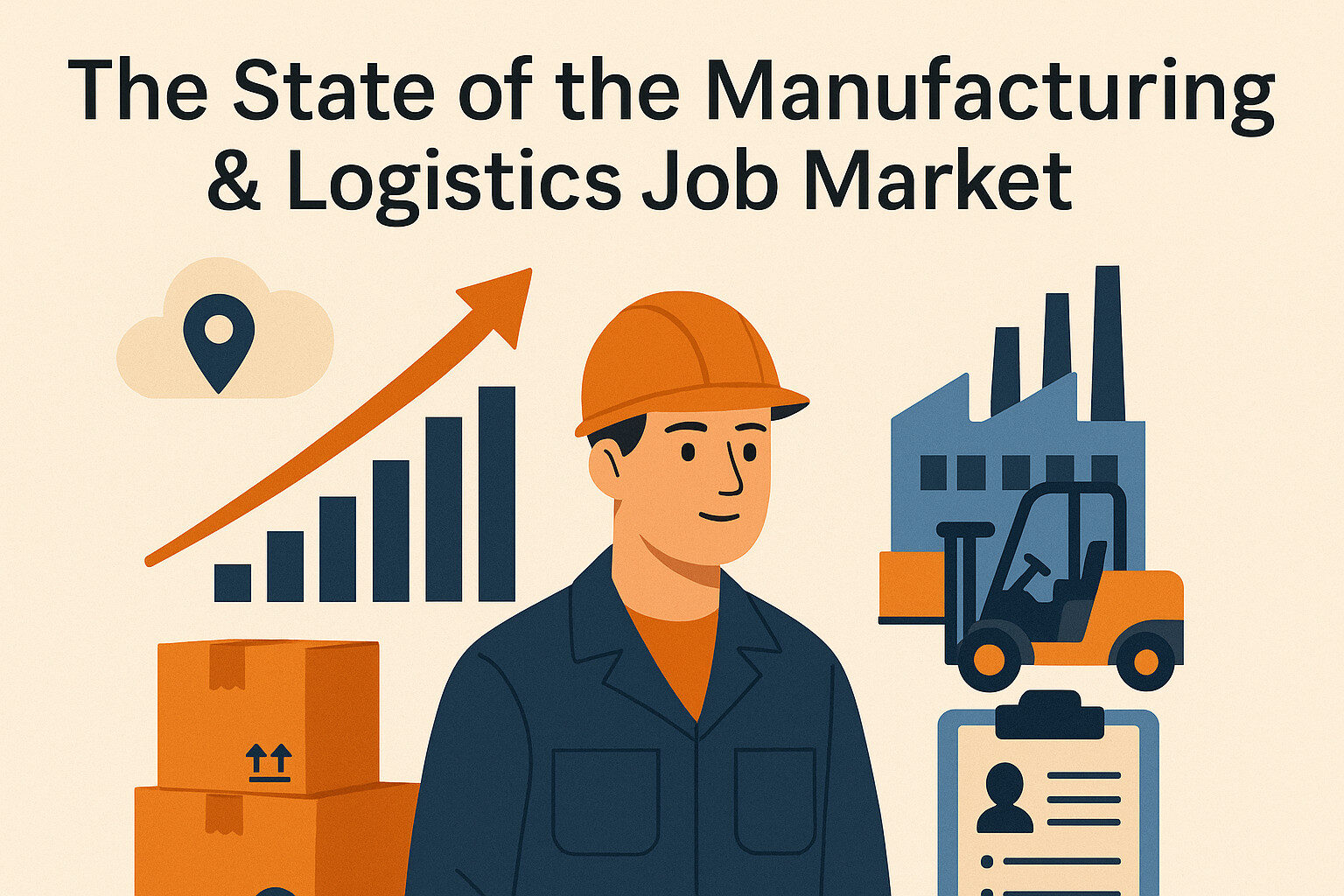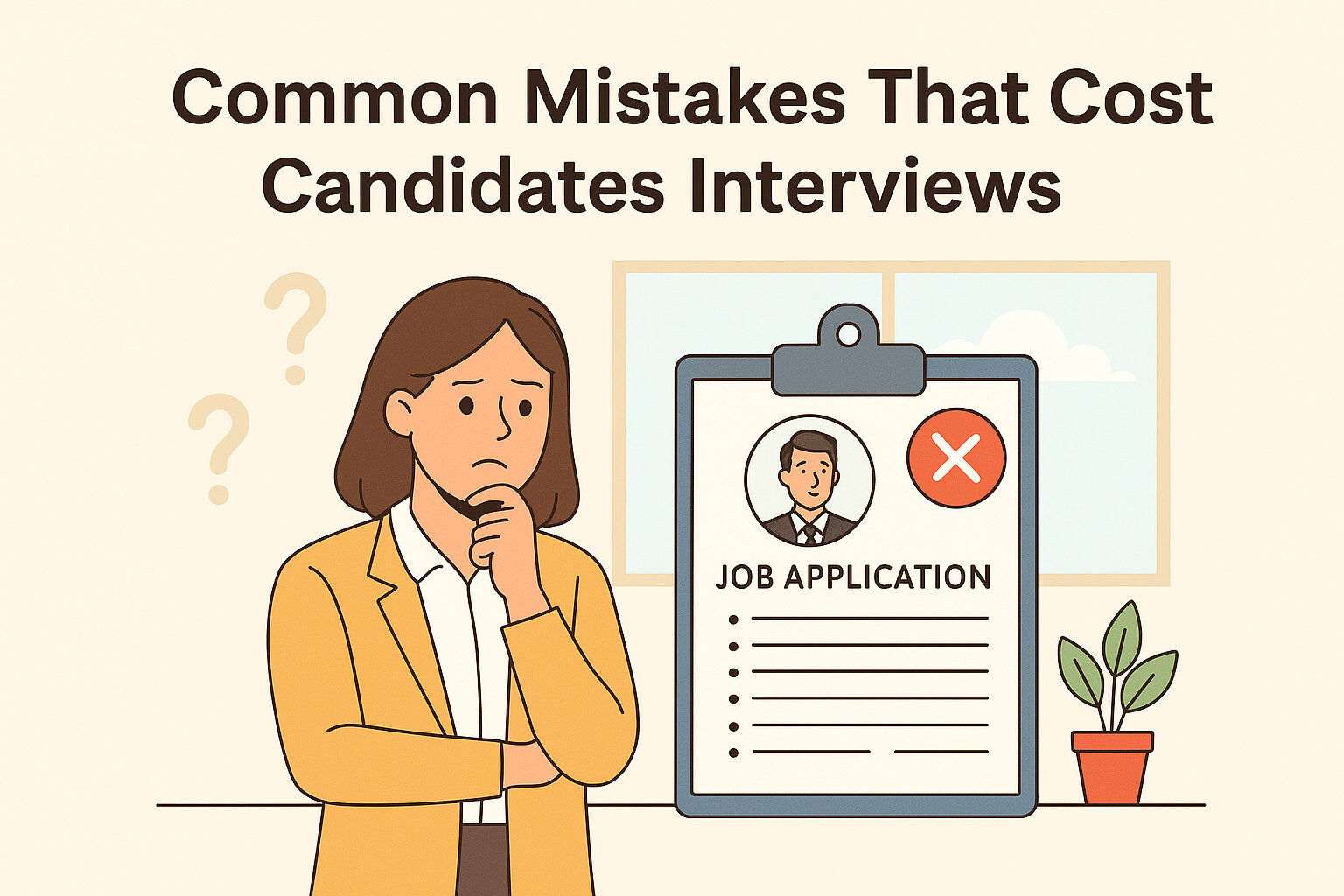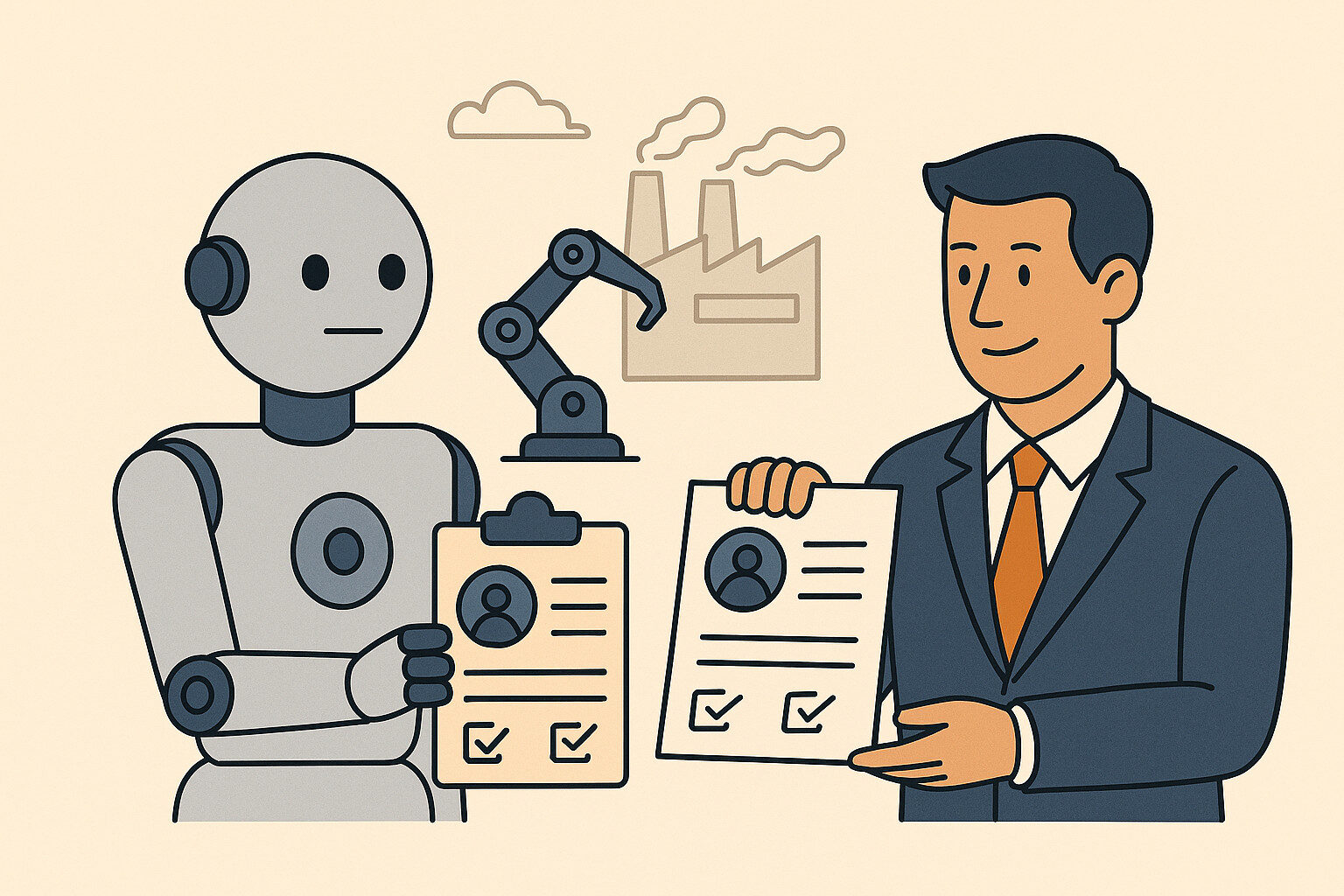The U.S. job market for skilled trades, warehouse operations, and manufacturing is booming but also evolving fast. Whether you’re applying for your first plant technician role or moving up to a logistics supervisor position, understanding how to present yourself in today’s market can make or break your success.
In this guide, we’ll explore job seeker advice manufacturing and logistics professionals can use right now including resume hacks, interview strategies, and data-driven insights about what employers actually look for. You’ll walk away with practical steps to land interviews faster, impress hiring managers, and grow your career in one of America’s most dynamic industries.

The State of the Manufacturing & Logistics Job Market in 2025
Before diving into personal strategies, it helps to know the bigger picture.
- According to the U.S. Bureau of Labor Statistics, manufacturing employment reached 13 million in 2025, and logistics (transportation and warehousing) employs over 6.7 million people both showing steady demand despite automation.
- A Deloitte study projects 2.1 million U.S. manufacturing jobs could go unfilled by 2030, driven by retirements, digital transformation, and skills shortages.
- The average wage for production workers has risen 4.1% year-over-year, signaling competitive hiring.
- In logistics, the growth of e-commerce and supply chain diversification continues to create new roles from warehouse automation specialists to fleet planners and route analysts.
These trends mean one thing: companies are hiring, but they’re also selective. Employers want adaptable, safety-conscious, and tech-literate professionals who can grow with the business.
Part 1: Crafting a Winning CV for Manufacturing & Logistics Roles
Your CV (or résumé) is your first interview. A well-structured, industry-specific resume can increase your chances of being shortlisted by up to 70%, according to LinkedIn recruiting data.
1. Tailor It to the Role Always
Generic resumes rarely make it through applicant tracking systems (ATS).
Instead, mirror the language of the job posting. For example:
- If the job description says “Preventive Maintenance” include that exact term.
- Replace “Machine Work” with “CNC Operation and Preventive Maintenance” if applicable.
Pro tip: Use 2–3 lines under each role to quantify achievements.
✅ “Reduced downtime by 15% through predictive maintenance implementation.”
✅ “Improved on-time delivery by optimizing forklift routes and shift scheduling.”
2. Highlight Technical Certifications and Tools
In manufacturing and logistics, certifications can matter as much as degrees.
List relevant ones clearly in a separate section:
- OSHA 10 / 30
- Forklift Certification
- Lean Six Sigma (Green/Yellow Belt)
- CDL (Commercial Driver’s License)
- SAP, WMS, or ERP systems familiarity
- Microsoft Excel or Power BI for tracking inventory
Why this matters: 73% of employers use automation or AI tools to screen resumes for specific keywords. Missing one could mean your application isn’t seen by a human.
3. Format for Readability
Recruiters spend 6–8 seconds scanning each resume. Keep it simple:
- Use clean fonts like Arial or Calibri, size 11–12.
- Keep your CV to one page (entry/mid-level) or two (senior).
- Avoid long paragraphs use bullet points with impact verbs (Operated, Led, Designed, Reduced).
4. Add a “Career Summary” Instead of an Objective
Employers want outcomes, not intentions. Replace the generic “Career Objective” with:
Career Summary:
Skilled logistics coordinator with 5+ years of experience managing warehouse operations for Tier-1 suppliers. Proven record in improving fulfillment accuracy by 12% and leading 15+ cross-shift team members safely and efficiently.
5. Optimize for ATS (Applicant Tracking Systems)
Over 90% of manufacturing employers use ATS. To pass these systems:
- Save your file as a Word (.docx) or PDF with text layers intact.
- Avoid tables and graphics; use consistent headers (“Experience”, “Skills”, “Education”).
- Include job title keywords and relevant tools.
Part 2: Build a Personal Brand that Reflects Reliability and Growth
Recruiters now check your online presence. A professional, updated profile can be your silent recruiter.
1. Optimize Your LinkedIn
- Add a clear professional photo (no selfies or helmet shots).
- Use a headline like:
“Maintenance Technician | Preventive Maintenance | Lean Manufacturing | Safety-Driven”
- Write a 3-line “About” summary using keywords (equipment, logistics, safety, etc.).
- Add recommendations from supervisors or team leads.
2. Include Project Highlights
If you led process improvements or safety initiatives, post them as project updates. Employers want to see impact, not just responsibilities.
3. Network Inside the Industry
Follow organizations like SME (Society of Manufacturing Engineers), APICS, or MHI (Material Handling Industry). Comment meaningfully on posts from employers you admire.
Networking isn’t just for white-collar roles 45% of U.S. skilled workers found their last job through referrals or LinkedIn activity.
Part 3: Interview Preparation What Employers Look For
Once you get to the interview stage, the focus shifts from your resume to your readiness and attitude. Manufacturing and logistics interviews typically assess three things: safety mindset, technical skill, and reliability.
1. Prepare for Behavioral Questions
Use the STAR method (Situation–Task–Action–Result).
Examples:
Q: “Tell us about a time you prevented a safety incident.”
A: “In my previous role, I noticed operators skipping lockout-tagout steps (Situation). I created a 10-minute safety checklist before each shift (Action), which reduced near-miss incidents by 30% (Result).”
Q: “Describe how you handle production pressure.”
A: “During a peak quarter, we had delayed shipments (Situation). I reorganized forklift paths to minimize bottlenecks (Action) and increased throughput by 12% (Result).”
2. Demonstrate Your Knowledge of the Company
Research the company’s key operations:
- What type of manufacturing do they specialize in (automotive, plastics, food processing)?
- What facilities or states do they operate in?
- Mention something recent: “I saw your company added an automated sorting line last quarter that’s exciting for future efficiency.”
3. Practice “Safety Culture” Responses
In logistics and manufacturing, safety is not a checkbox, it’s culture.
You can impress by saying:
“Safety is part of productivity. I start each shift with a 2-minute hazard scan and always report potential issues early. Preventing incidents saves both people and time.”
4. Ask Smart Questions at the End
Always prepare 2–3 thoughtful questions:
- “How does your company support continuous training for technicians?”
- “What’s the most important skill your best employees share?”
- “Can you describe how success is measured for this role?”
Employers appreciate candidates who show long-term interest, not just job-seeking urgency.

Part 4: Common Mistakes That Cost Candidates Interviews
Even experienced professionals make avoidable errors that derail hiring outcomes.
- Unexplained Employment Gaps:
If you took a break, be upfront e.g., “I took six months to complete OSHA and forklift recertifications.” - Generic Applications:
Copy-pasting one resume for all jobs shows low effort. Tailor each application slightly. - Poor Communication or Late Replies:
In logistics roles, timing equals trust. Respond to interview invites or recruiter emails within 24 hours. - Ignoring Soft Skills:
Teamwork, punctuality, and problem-solving are critical. 60% of manufacturing managers cite “attitude” as the reason hires succeed or fail. - Neglecting Post-Interview Follow-up:
Always send a short thank-you email reaffirming your interest and summarizing one key skill that aligns with their needs.
Part 5: How to Stand Out in a Competitive Market
1. Emphasize Adaptability
Automation and digital tools (like WMS, predictive maintenance, robotics) are changing industrial jobs. Candidates who highlight learning agility have a clear edge.
Example: “Recently trained on autonomous pallet jack software integration eager to apply it in a live distribution setting.”
2. Track Your Metrics
Quantify impact: production rate, safety record, downtime reduction, cost savings.
Employers trust numbers more than adjectives.
3. Develop “Hybrid Skills”
The best hires combine mechanical know-how with digital literacy.
In manufacturing, those who understand both machinery and dashboards earn 15–20% higher wages than peers (BLS data).
4. Prepare for Assessments
Some logistics employers now use short online tests for problem-solving or route optimization.
Practice on free resources like Indeed Skills Assessments or SkillGauge.
5. Continuous Learning = Career Longevity
Upskilling in areas like predictive maintenance, lean manufacturing, and warehouse automation can future-proof your career.
Consider platforms like Coursera, Tooling U-SME, or MITx for short certifications.
Part 6: Trends Shaping the Future of Manufacturing & Logistics Jobs
- Automation + AI Integration
AI-powered systems now handle scheduling, predictive maintenance, and routing. Employees skilled in data-assisted tools will stay ahead. - Green Manufacturing & Sustainability
Demand for professionals who understand eco-friendly production processes and waste reduction will grow 23% by 2030. - Reshoring & Regional Manufacturing
U.S. manufacturing is moving back home, creating local opportunities in the Midwest, Texas, and Carolinas. - Workplace Flexibility
Hybrid roles are emerging in logistics remote tracking, data analytics, and planning positions offer flexibility never seen before. - Employee Retention Through Upskilling
Companies are investing in training use this trend to your advantage by showing eagerness to learn.
Conclusion: Your Career Is a Long-Term Process, Not a One-Time Application
Landing a job in manufacturing or logistics isn’t about luck it’s about preparation, positioning, and persistence.
If you apply the steps in this guide tailoring your CV, quantifying your achievements, mastering safety communication, and aligning with company values you’ll be well ahead of most candidates.
Remember, manufacturing and logistics are the backbone of the U.S. economy. Employers aren’t just hiring labor, they’re investing in reliability, precision, and growth. With the right strategy, your next opportunity could be more than a job; it could be the start of a long, rewarding career path.




